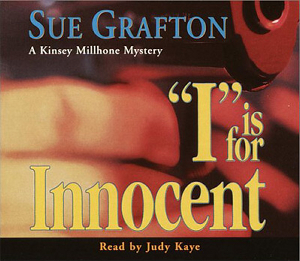 The rise of the health culture in the seventies and eighties was not gradual and imperceptible. It was abrupt and noticeable. Many commentators – journalists, doctors, sociologists – tried to understand its significance and implications. Here’s an example of how preoccupation with health made its way into fiction, from a Sue Grafton mystery published in 1992.
The rise of the health culture in the seventies and eighties was not gradual and imperceptible. It was abrupt and noticeable. Many commentators – journalists, doctors, sociologists – tried to understand its significance and implications. Here’s an example of how preoccupation with health made its way into fiction, from a Sue Grafton mystery published in 1992.
Kinsey Milhone’s dapper, 83-year-old neighbor, Henry, is a featured character in many Sue Grafton mysteries. In ‘I’ Is for Innocent, Henry’s brother William comes to visit. Over drinks at Rosie’s, Henry complains to Kinsey about his brother’s preoccupation with his health:
His health regimen occupied our entire day. Every hour on the hour, he takes a pill or drinks a glass of water . . . flushing his system out. He does yoga to relax. He does calisthenics to wake up. He takes his blood pressure twice a day. He uses little strip tests to check his urine for glucose and protein. He keeps up a running account of all his body functions. Every minor itch and pain. If his stomach gurgles, it’s a symptom. If he breaks wind, he issues a bulletin. Like I didn’t notice already.
An obsession with prevention and symptoms
The passage illustrates many health culture trends in full swing by 1992. The overall theme here is preoccupation with one’s state of health. Drinking water is a practice that William could easily have learned from a health segment on the news or an advice column in a newspaper. “Yoga to relax” shows an awareness of the relationship between stress and disease. Calisthenics is an example of increased fitness activity, one of the four pillars of public health awareness campaigns: smoking, diet, fitness, and risky behaviors (seat belts, helmets).
Blood pressure and urine analysis are examples of increased diagnostic testing, which leads to increased labeling of symptoms as disease, followed by increased medical treatment. Greater awareness of symptoms — and a tendency to interpret symptoms as indicators of disease — is a major trend over the last fifty years. This increase in symptom awareness, along with the interpretation we assign to these symptoms, makes us more anxious about our health. This is an unfortunate downside of the health culture.
Recent Sue Grafton mysteries
When Grafton published ‘A’ Is for Alibi in 1982, it must have seemed like a great idea to create an audience that would anticipate the next 25 letters of the alphabet. I hadn’t read any of her novels for a few years, and when I tried the most recent ones (“R” and “S”), I was surprised by the endlessly boring descriptions of things such as how Kinsey drove from point A to point B. I looked up reviews on Amazon, and there seem to be quite a few people who agree.
The descriptions in ‘I’ Is for Innocent are often more imaginative and striking: “The lines in his face suggested an origami paper folded once, then flattened out again.” But then we don’t read mysteries primarily for their literary excellence. In the more recent volumes, I still appreciated Kinsey’s irreverent, non-conformist attitude. That hasn’t changed.
The latest Grafton mystery, ‘T’ Is for Trespass, is described as a depressing tale of identity theft and elder abuse told through the mind of an evil sociopath. Do I really want to read that? This actually relates to the health culture. A great deal of the information we take in on a daily basis – not just health information – is designed to increase our sense of risk and anxiety. How do we find a happy medium between burying our heads in the sand and staying informed? Can we learn to read between the lines of the latest health scares and avoid information that unnecessarily increases anxiety? More on this later.
Sources:
Sue Grafton, “I” Is for Innocent


Sorry, comments are closed for this post.